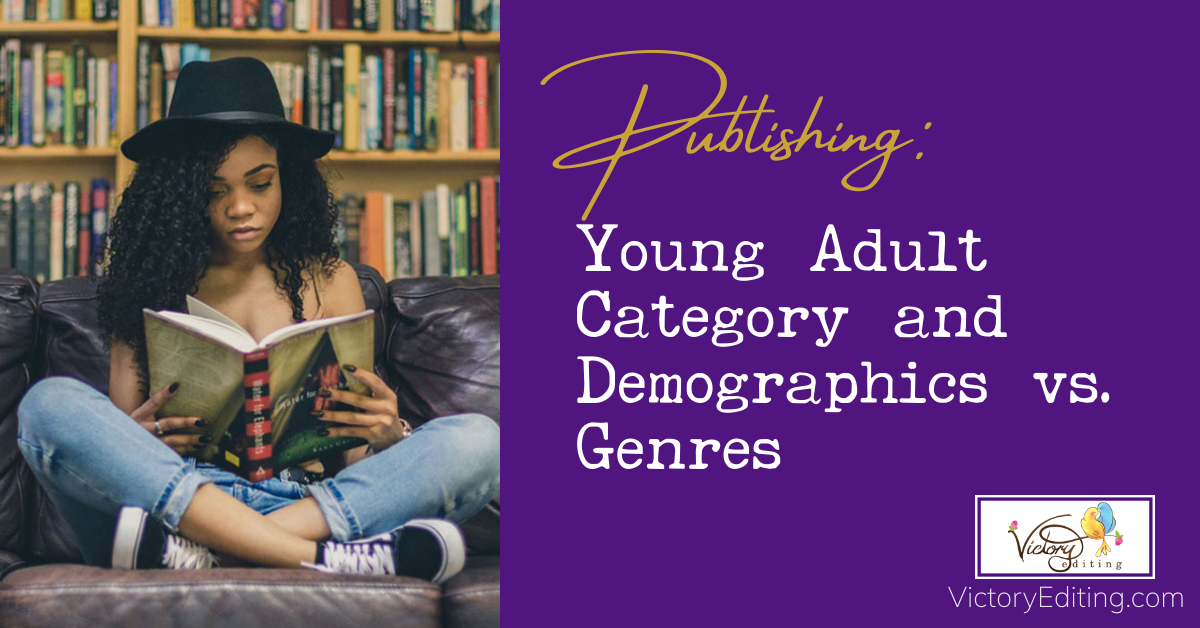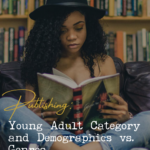This little mini-rant is brought to you by my reading an article over at InD’Tale. In fairness, I hear people refer to the “YA genre” and the “new adult genre” all the time, and I get that I’m fighting a losing battle. Out of sheer hardheadedness, however, I continue to talk about the difference between a demographic and a genre as it’s fairly important in the grand scheme of things.
So—on to the good stuff!
What exactly is a demographic?
A demographic is the audience a book (or television show or other product) is aimed at, and we (librarians, booksellers, publishers, etc.) typically divide those by age range (children, middle grade, young adult, new adult, adult).
Children’s books aren’t really divided into topic (genres)—they pretty much deal with some aspect of character traits or family, making friends, that sort of thing. Same for middle grade. Middle grade books tend to be things like Beverly Cleary’s Ramona books. Books like Are You There, God? It’s Me, Margaret straddle the line between upper middle grade / younger YA.
Once you hit YA, though, you start running into all the genres (barring erotica) that you find in adult literature, and the same applies to new adult literature as well. The distinction isn’t just the age of the protagonists, though—it’s also the underlying issues the protagonists face. Peer pressure, the urge to fit in, dealing with drugs, pregnancy, applying to college, coming of age, parents, etc. for YA, and for new adult, adjusting to college or life right after college, etc.
So why shouldn’t we call Young Adult a genre?
The problem with people calling a demographic a genre is that a genre should tell you something about the “type” of story you’ll be reading. If I tell you a book is a romance or a mystery, that tells you what to expect. And then a subgenre drills it down further. If I say a book is a mystery, you may think, “Oh, gosh. I like mysteries, but I don’t want anything too gory!” So if I tell you it’s a police procedural (think CSI on TV), you’ll probably pass on it. But if I tell you it’s a cozy mystery (think Murder She Wrote, back in the day), then that may be right up your alley.
If I just tell you it’s a YA book, I’ve told you none of that. Consider that the following books are all YA:
- J.K. Rowling’s Harry Potter and the Sorcerer’s Stone (fantasy)
- Suzanne Collins’s The Hunger Games (dystopian)
- Fred Gipson’s Old Yeller (coming of age)
- Amanda Brice’s Dani Spevak books (mystery-solving ballet dancer)
- Nichole Chase’s Dark Betrayal series (paranormal)
- Susan Quinn’s Mindjack Trilogy (futuristic)
- Stephenie Meyer’s Twilight (paranormal)
- Karen Avivi’s Shredded (a girl trying to make it in the boys’ world of BMX sports)
I could go on and on, but I hope I’ve illustrated the difference between demographic and genre. It’s not my first time on this soapbox, so you’ll probably see me ranting about it again in the future. Feel free to discuss or comment—I love talking books, especially the nuts and bolts of genres and demographics.
Photo by Seven Shooter on Unsplash
Hi! I’m in the process of putting together various classes, including one comparing the subgenres of Urban Fantasy Romance vs. Paranormal Romance. You can click below to see what classes are coming down the pike and to sign up to be notified when they launch. I can’t wait to see you there!



